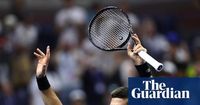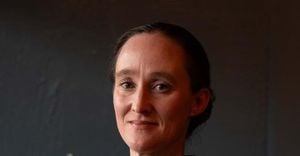Novak Djokovic’s return to the US Open was anything but routine, even if the scoreboard tells a story of straight-sets dominance. On August 25, 2025, under the bright lights of Arthur Ashe Stadium, the world No. 1 dispatched American teenager Learner Tien 6-1, 7-6 (7-3), 6-2 to advance to the second round. But behind those numbers lurked a tale of grit, discomfort, and the relentless pursuit of tennis greatness.
Making his 19th main draw appearance at Flushing Meadows, Djokovic notched his 80th career win on Arthur Ashe Stadium—more than any other male player in history, surpassing the legendary Roger Federer (77) and Rafael Nadal (64). Yet, the four-time US Open champion’s post-match demeanor made it clear that this milestone came at a cost. "I started great… and then I start to feel really – I don’t know why. I really was surprised how bad I was feeling physically," Djokovic revealed after the match, according to multiple sources. His admission was as honest as it was unexpected from a player renowned for his fitness and resilience.
Djokovic’s physical struggles became apparent as the match wore on. The Serbian star, returning to competitive action after a six-week hiatus following his Wimbledon semifinal loss to Jannik Sinner, began the contest in vintage form. The first set zipped by in just over 20 minutes, with Djokovic dictating play and Tien struggling to find his footing. But the script flipped in the second set. Tien, a 19-year-old lefty with a wicked forehand and a burgeoning reputation—thanks in part to a stunning win over Daniil Medvedev at the Australian Open earlier this year—dug in and began to extend rallies, testing Djokovic’s legs and lungs.
As the rallies grew longer and more physical, Djokovic’s frustration started to bubble to the surface. He received two time violations, the second coming during the tense second-set tiebreak. That violation cost him his first serve at a critical juncture, prompting an exasperated exchange with the chair umpire: "Did you really have to do that?" Djokovic asked, his irritation laid bare for the crowd and cameras. Still, the veteran found a way to steady himself, saving a set point with a clutch ace at 4-5 and eventually clinching the tiebreak 7-3.
"I kind of dropped my level and made a lot of unforced errors and kind of got him back into the match. I’m glad that I reset myself after the second set," Djokovic said, reflecting on the rollercoaster momentum. He also acknowledged that the mid-match slump was cause for concern: "Because then my life on the court will be much more difficult." Throughout the second set, Djokovic could be seen stretching his left leg, bending over, and at times looking downright exhausted. Tien, sensing an opportunity, tried to exploit the situation by dragging the match into longer exchanges, but Djokovic’s experience and serve under pressure proved decisive.
Despite the visible discomfort—at one point, Djokovic even received medical attention courtside—he was quick to clarify post-match that he wasn’t dealing with any specific injury. "Luckily, I have two days off, but yes, it’s a bit concerning. I don’t know. I don’t have any injury or anything. It was just very hard for me to stay in long rallies and recover after points," he explained. The lack of recent match play—Djokovic had skipped both the Cincinnati and Toronto tournaments to rest and spend time with family—may have contributed to his match fitness woes.
For his part, Learner Tien acquitted himself admirably in his Arthur Ashe Stadium debut. The American teenager, who has turned heads on tour with his aggressive baseline game, managed to push Djokovic to the limit in the second set, controlling the baseline with his lefty forehand and forcing the Serb into uncharacteristic errors. Though ultimately outclassed, Tien’s performance suggests he’s a name to watch in the coming years.
Djokovic, meanwhile, continues to defy the passage of time. At 38, he remains one of the top three players in Grand Slam tournaments this year, having reached the semifinals at all three previous majors. Still, even he admits that the physical demands of best-of-five-set tennis are becoming tougher. "I wish I had Learner Tien’s age, but that’s not possible. Actually he’s [half] my age, that’s incredible," Djokovic quipped, a mix of admiration and wistfulness in his tone.
As he looks ahead to the second round, Djokovic will face another American, 22-year-old Zachary Svajda, who booked his spot by defeating Italian Zsombor Piros in straight sets (6-4, 6-2, 7-5). Svajda, a qualifier, will have the crowd’s backing but faces a daunting challenge against the 24-time Grand Slam champion. "In the important moments I just put one ball more in the court than he did," Djokovic said of his ability to raise his level when it mattered most. "I think it was also good to experience that, in a sense, kind of break the ice officially in the tournament. Looking forward to the next challenge."
Elsewhere in the men’s draw, sixth seed Ben Shelton cruised past Ignacio Buse of Peru 6-3, 6-2, 6-4, while fourth seed Taylor Fritz overcame fellow American Emilio Nava 7-5, 6-2, 6-3 to advance. On the women’s side, top seed Aryna Sabalenka began her title defense with a 7-5, 6-1 victory over Rebeka Masarova, and Alexandra Eala made history by becoming the first Filipino player to win a Grand Slam main draw match, rallying from 1-5 down in the final set to defeat the 14th seed Clara Tauson 6-3, 2-6, 7-5 (11).
With two days of rest ahead, Djokovic has time to recover and regroup. The physical questions linger, but if history is any guide, writing off the Serbian legend would be premature. The US Open’s opening act has already delivered drama and intrigue—and with Djokovic still in the hunt, the story is far from over.




